With the launch of the new LEGO Power Functions 2.0 (now referred to as LEGO Powered Up) system in the #60197 LEGO City Passenger Train, #60198 LEGO City Cargo Train, and #76112 LEGO Super Heroes App-Controlled Batmobile, a lot of questions and concerns surfaced from the LEGO fan community. Ambassadors of the various recognized LEGO fan groups were asked to gather and submit questions from their members, so the LEGO Powered Up team can answer them. Below, I have included a summary of some of the topics that was discussed, and you can read the full discussion in this LEGO Ambassador Network blog post and comment section. 🙂

In response to questions about renaming LEGO Power Functions to LEGO Powered Up, the LEGO Powered Up team confirmed that although initially they used LEGO Power Functions 2.0 as the name of the new LEGO electronic building platform, they now refer to it as LEGO Powered Up.
The LEGO Powered Up platform was designed to replace LEGO Power Functions completely, and also reach into other product lines that used different electronic systems. Current products using elements from the LEGO Powered Up platform are as follows: LEGO WeDo 2.0, LEGO BOOST, LEGO City trains, LEGO DUPLO trains, and the LEGO Super Heroes App-Controlled Batmobile. All new electronics sets from now on will use the LEGO Powered Up platform, including LEGO System sets, LEGO Technic sets, LEGO DUPLO sets, and LEGO Education sets.
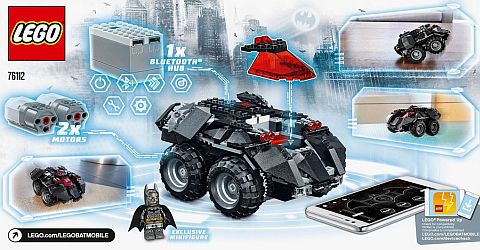
While some of the components of the new platform look very similar to LEGO Power Functions (i.e. battery box, motors, etc.), there are some significant differences that make the two systems incompatible; the wired connections have different connectors, and the wireless connection uses Bluetooth instead of Infrared. (This wireless connection is used both between the physical LEGO Powered Up elements, and for connecting to mobile smart devices.)
There were a number of questions about LEGO releasing adapters to make some of the LEGO Power Function components compatible with the LEGO Powered Up system. The LEGO Powered Up team had no plans to release adapters, however due to much concern and criticism from the community about this, they may reconsider. (Note: the two power control wires of the old 9V system, LEGO Power Functions, and LEGO Powered Up have the same function across the three platforms.)
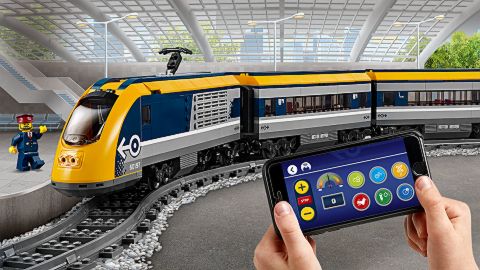
There were also questions about the physical connections of the LEGO Powered Up platform, like incorporating more than two outlets on the battery box, and being able to stack connectors (like in the LEGO Power Functions platform). The LEGO Powered Up team is still working on further developing the new platform by adding new components and functions, and they did not go into detail answering these questions. However, they did explain that the reasoning behind not using stackable plugs was to enable more intelligent interaction through the wires. An example of this is that all elements can now be electrically identified, so when attaching e.g. a train motor, the LEGO Powered Up hub and the LEGO Powered Up app can recognize it as a train motor. This allows younger users to easily put components in the right place. Another benefit is that LEGO can optimize functionality based on particular elements. For example, when using a train motor or an add-on light, the handset increments/decrements power (good for trains/setting lights), but when using the medium motor, the handset sets 100% power when a button is pressed down (good for RC vehicles).
Questions about the limitations of the remote control versus the app were also asked. For the LEGO City trains, the app can provide sound-effects for the trains – something that the remote cannot do. The LEGO Powered Up team responded that although this function is not fully developed yet, the remote can connect to a smart device via Bluetooth, and you will be able to give different functions to the buttons via the app.
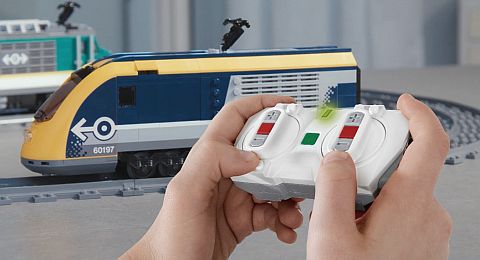
In regards to how many LEGO Powered Up hubs a single remote can control, the LEGO Powered Up Team shared that you can link up to five devices together. With a mobile smart device, the current limit is up to ten hubs, but this is device-dependent. As far as how many motors you can control with a single hub, with the Smart Move Hub 2 I/O used in the LEGO BOOST set, you can control up to four motors (two internal and two external), and with the Smart Hub 2 I/O, you can control two external motors.
An interesting feature of the LEGO Powered Up system is that if you build two or more hubs into the same train, and give them all the same channel color, you can drive up to five train motors in sync by connecting them to the same output on each hub. This is especially useful for long trains. In addition, you can use two motors at the same time from the same controller with one motor having its polarity reversed. This is done by turning the button interface to the direction of control needed. This feature is very handy for operating vehicles where you want vertical control for forward/backward drive and horizontal for steering.
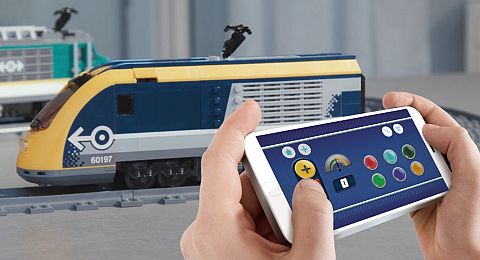
Some reviewers reported that the range of the Bluetooth connection was only 3-4 meters, even though the advertised range is well over 10 meters (although this can be limited by factors such as electromagnetic interference). The LEGO Powered Up team will look into these reports and see if they can figure out what might be the problem. When the hub and controller are out of range, the connection gets lost, and both devices go into standby mode with a blinking white LED. Any running motors will get turned off. Unfortunately, it’s not possible to elect to keep the motor running while there is no connection, even though this would be very useful for trains. In addition, if you are using the app, and your smart device turns off/goes on standby, motors will get turned off as well. When the hub and controller are back range again, the link will be reestablished. The good news is that each of the network connections runs on a unique address, so another controller can’t highjack your network. In addition, these network connections are remembered even after the connection gets lost.
There were also questions about the compatibility of the LEGO Powered Up components in different systems, like LEGO BOOST, LEGO WeDo, LEGO City Trains, etc. Some of the questions were as follows: Can we use the LEGO Powered Up remote with the LEGO WeDo hub? Can we use the LEGO Powered Up remote with the LEGO BOOST hub? Can we use LEGO Boost / LEGO WeDo sensors with the LEGO Powered Up hub? Can we use the LEGO BOOST / LEGO WeDo / LEGO Powered Up app to control any of the other platforms? The LEGO Powered Up team responded that the aim of the new platform is that all the wired and wireless components will eventually work together. However, some of these connections are not implemented yet and will come through firmware and app updates. Please note that the LEGO Powered Up system does not work with LEGO Mindstorms, and there was no mention of making them compatible in the future.
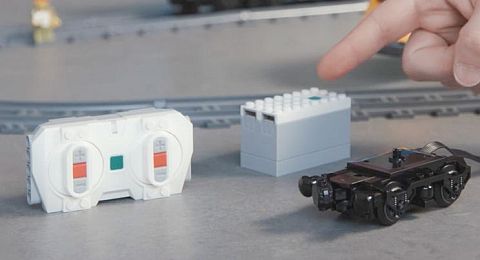
In response to questions about the electrical characteristics of the system, like maximum current at the outputs, minimum and maximum voltage at the outputs, torque of the various motors, and how these compare to LEGO Power Functions 1.0 components, the LEGO Powered Up team stated that these will be shared later this year.
As far as powering the LEGO Powered Up system, the Smart Hub (used in the LEGO CITY trains and the App-Controlled Batmobile) holds 6 AAA batteries, and the Smart Controller holds 4 AAA batteries. Rechargeable Lithium, NiMh, etc. batteries can be used instead of traditional batteries. According to the LEGO Powered Up team, the power consumption of the old and new platforms is comparable.

An interesting question was about how reliable the system is in an environment with many active controllers (school setting, LEGO convention, etc.). The response from the LEGO Powered Up team was that the new platform can be used in an environment with many active devices. With LEGO WeDo 2.0, they have seen over 45 active independent networks working fine without noticeable impact to model action/reaction.
There is also concern about how long the LEGO Power Functions components will be available for those who want to stay with the older system, and when will they get completely replaced by the LEGO Powered Up components. In response, the LEGO Powered Up team assured fans that LEGO Power Functions will be available for some time and won’t suddenly disappear from stock. There will be a period of time where both systems will be available, until the older system gradually gets phased out. The new LEGO Powered Up components should be available individually at the beginning of 2019 at the Online LEGO Shop.
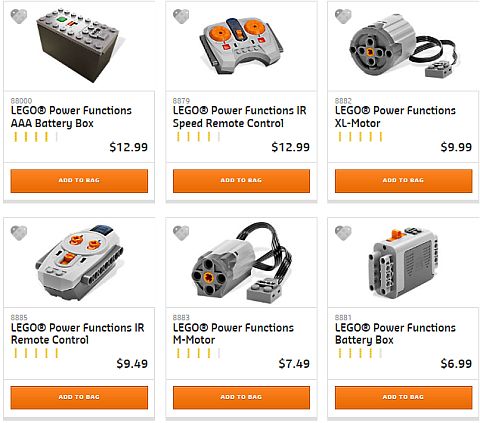
Reading the questions, answers, and follow-up questions, it is clear that there are still some concerns that need to be addressed. The LEGO Powered Up team did test the new system in workshops with LEGO train fans to ensure the best solutions, and they will continue to be in dialogue with the LEGO train and LEGO Technic fan communities to see how to improve and expand the possibilities with the LEGO Powered Up platform. This is especially important for the smooth continuation of LEGO train shows and LEGO Great Ball Contraptions, as well as for children to be able to transition their older trains over to the new platform.
If you are interested in the new system, I encourage you to read the full discussion at this LEGO Ambassador Network blog post and comment section. And, if you are curious to try out the new LEGO Powered Up platform yourself, the #60197 LEGO City Passenger Train, #60198 LEGO City Cargo Train, and #76112 LEGO Super Heroes App-Controlled Batmobile are available at the Online LEGO Shop.

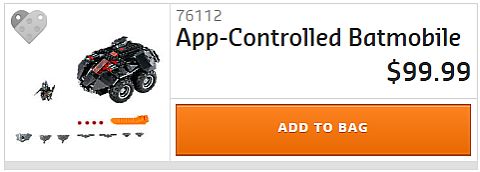
What do you think? How do you like the new LEGO Powered Up platform? Do you have any questions or concerns about it? Did you try out any of the sets that use the new system? Feel free to share your thoughts and discuss in the comment section below! 😉
And you might also like to check out the following related posts:












Very interesting questions, answers and discussion. I agree with the other commenters on the blog post about needing to have an adapter. Imagine kids finding out the hard way that their old train parts are not compatible with the new ones.
Yeah, for kids, having a single train set is a big deal! I also agree that they should release adaptors.
I don’t like how the Lego rep is so dismissive first about having an adapter. Lego’s trademark is that all parts are compatible no matter how old or new they are. I also don’t like the dependence on an app. Motors should be able to connect to the battery box and controlled from there.
Bluetooth is better than infrared, for the most part. And as long as using the app is optional, I don’t have a problem with it. I do have a problem with PF 1.0 and PF 2.0 parts not being compatible. People are not going to switch over if they have to replace their whole current system. Give us some connectors and the transition will go much smoother.
Yes, compatibility is going to be important. It came up over and over again both in the original questions and in the comments on the answers.
Yes, I remember other people mentioning the importance of backward compatibility as well. Hopefully, they will listen to the feedback and act accordingly. The new platform is still very new, so there is a change that changes will be made.
Seems to be old news for Train fans. Through the ages, there’s been a couple of system upgrades where backward compatibility has been non-existent, or hard to get around…
Backwards compatibility was actually provided between the previous systems, and was available at least for a while. Being so dismissive about compatibility seems to be the new approach. This may change though, as they have been getting a lot of negative feedback about it.
I’m curious about the new trains, but it scares me that the PUP parts are not compatible with PF parts. It might be better just to stock up on the PF parts before they disappear. I really don’t care for the app.
That’s another good possibility, especially if you don’t care for the app. Power Functions works just fine, and there is really nothing wrong with it. It is especially useful for trains and Technic vehicles.
I’m glad lego is getting feedback from the community. They better not screw this up, because we don’t want them to keep replacing power functions every decade. The parts are expensive. I understand adding upgraded features like the app, but why did they have to go with completely new and proprietary plugs?
The shape of the new connectors is such as to fit with and in between other LEGO elements. As far as why they are not stackable, the design team did talk about how this allows them to control each module more granularly. There is great benefit for the stackable connectors too, so I understand the disappointment. Hopefully, the design team can come up with a comparable solution with the new platform.
How seriously is Lego going to take our feedback? It seems like the Lego dude at the ambassador blog post was kind of dismissive. Like, we are not going to change our minds, and you are on your own.
They did reach out to collect questions once it was clear that fans were concerned and even upset. And they still accept questions and comments that are sent to the design team. So, I would say those are good signs that they are actually listening.
how bout all users who are not tech savy (phone ) old people example , no offense, we need a conversion cable
Yes, we definitely need a conversion cable. As far as the app goes, we can skip it and just use the remote. It won’t give us sound effects, and we can’t do programming with it, but to run trains and such, it is sufficient. 🙂
Hi
As far as I miss the stackable connectors, I think I understand one of the possible reasons behind not having stackable connectors on new Powered Up modules.
On “classic” PF, you stack motors connectors directly on battery box (or some extension cable) and they draw as much power as batteries allow. If the batteries cannot supply enough current and motors go slow, just remove some load and everything is fine.
On Powered Up/BOOST modules, each connector (or internal motor) is tied to a channel of an electronic driver able to supply few hundreds mA.
From what I saw, BOOST Move Hub have two LB1836 drivers inside, able to supply continuously around 400-500mA per channel. So putting more than one PF motor on one channel might have unwanted results…
Sebastian, thanks for sharing that. It could very well be as you said, and the reason the connectors can no longer be stacked. I guess there are plusses and minuses for everything.
I have just bought a load of Lego Power Functions gear without realising about the new Powered Up technology 🙁
My main concern with the new system, as with many other electronics coming out in recent times, is the use of Apps to control things. Its all very well until the Apps get out of date or are stopped being supported. After that, your entire electronics system is just “bricked” (excuse the pun). This is why I much prefer a proper RC unit rather than relying on Apps and Mobile devices. At least that way we know in 10 years time its still usable.
James, yes, a lot of people have concerns about this. Please note that the Powered Up system does have a traditional remote as an option. The Powered Up app only add things like sounds. The main difference between PF and PUP is that PF works with IR and PUP works with Bluetooth. Bluetooth works better in some applications, but for most LEGO fans for home use it doesn’t really matter. In addition, Powered Up components are more expensive than Power Functions, so you did well with getting more of those.
The Control+ app lets you drive Lego sets only; build anything else and you’re out. Can PUP do better?
My son is 5 and Santa got him the Lego city 60051 train for Christmas. He has now found Powered Up on YouTube kids and has asked me to put the app on my phone. We have just discovered that it isn’t compatible with his train! Is it possible to purchase the hub and put this in his train for powered up to work? I am completely new to all this but obviously want to help my son if possible. Help!! What are our options or will he have to ask Santa for one of the newer trains this year!!! Kids love sound effects!!!
Joy, that’s an awesome train! However, as you discovered, it works with the older LEGO Power Functions system. Yes, it is possible to update the train to the new system, but you will have to get the #88009 LEGO Powered Up Hub, and the #88011 LEGO Powered Up Train Motor.
You might also get the #88010 LEGO Powered Up Remote Control, which works the same way as the old remote. But it sounds like your son enjoys the app and sound effects, so you can just skip the Remote and only get the Hub and the Motor. They are both available at the LEGO Powered Up section of the Online LEGO Shop.
Once you get those two pieces, all you need to do is swap out the old battery box to the new Hub (and you can remove the IR receiver as the new system works with Bluetooth), and exchange the old motor to the new one. Have fun! 🙂
My son is 10 and he’s a lego genius, the timing for him has been tricky because hes ended up with power functions, mindstorms ev3 and now powered up and none of these are compatible. Hes recently built a robot with the move hub and were navigating the powered up coding options, we just cant get the external ports to work with the app, I cant find any instructions or details online. There’s a lot more time going into looking for the right information then there is actually advancing his play or building. That’s my only frustration, the new features sound great but they re not without an actual resource of information about them. Where do you recommend we seek out information about these hubs?
David, Balazs from RacingBrick.com has lots of info on using and coding the Powered-Up components. Take a look at the tutorials on his website: https://racingbrick.com/
I built robot and these is details of using power up app to program him but found it to complicated to build controls so used technic controle in the end wired it up same as 42100 set use it’s controle
does the batteries need to be disconnected after each use to preserve life?
John, the batteries won’t be engaged if the unit is not used. However, like with all batteries, it’s a good idea to take them out if you aren’t planning to use them for a long time. This will prevent leakage and rust.
I want to see the raw “power up” code from the App Controlled Transformation car and learn more about the power up app logic.
Ross, check out RacingBrick.com. They have a whole section on the intricacies of the Powered Up system.